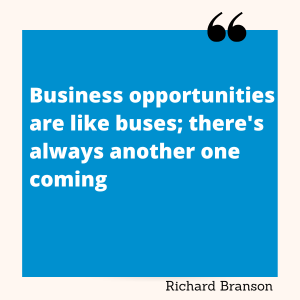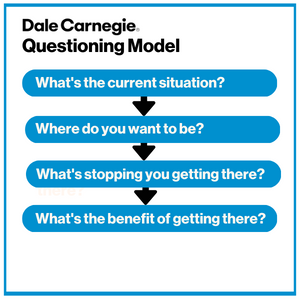 Graham Perkins is Director of Sales and Marketing for Dale Carnegie. An expert in his field, as a sales leader he sets an example for his team by prospecting leads, managing his own client base, using rigorous metrics to hold himself accountable, and nurturing the necessary mind-set for sales success.
Graham Perkins is Director of Sales and Marketing for Dale Carnegie. An expert in his field, as a sales leader he sets an example for his team by prospecting leads, managing his own client base, using rigorous metrics to hold himself accountable, and nurturing the necessary mind-set for sales success.
With the UK in economic turmoil, we sat down with him to talk about selling in challenging times and how he planned to keep his sales team motivated and productive in the months ahead.
Setting the tone for the rest of the interview, Graham started by recognising that the media is full of bad news about the economy and the prospect of a looming recession right now. For those working in sales, that negativity can easily affect one’s mindset, behaviour and results. But in a challenging economic environment, it’s critical that salespeople take control over their own situation, avoiding turtle mentality (retreating into one’s shell), and influence what they can to close as many sales as possible.
In this short blog he shares his advice:

Sales starts in the mind. Whether in a positive or a negative economic situation, our mindset has the most significant impact on our sales performance. If we become fearful of things we can’t control, it has a detrimental effect that will stop us from doing the right thing from a sales perspective, such as seeing our prospecting efforts decline. It’s not just the economy though; it can be outside factors such as lack of sleep, financial worries, matters of the heart, or family difficulties that can affect our performance at work. Resilience, tenacity, enthusiasm, and passion are all therefore critical when adopting the right mindset, and are qualities that have the potential to change our behaviour on client calls.
One of my favourite Dale Carnegie principles is, ‘live in day-tight compartments’, and this can massively help our mindset. If you start reflecting on your last month or two in sales where you’ve not been performing well, or your pipeline isn’t strong then you get stuck in the past, which can affect what you do each day. We can get consumed if we’re under-performing, but if we live in day-tight compartments, quick wins can be powerful and cumulative.

When things are tough, working in a hybrid sales environment can be really isolating. In order to maintain motivation and a can-do mindset, communication between the team and sales manager must be increased and intentional. Catching up once a week isn’t enough; sales leaders need to make time for regular one-to-one calls and increase touch points via WhatsApp groups, Teams, and in-person meet-ups in order to share successes and things that are working.

The world of sales has changed more than ever over the past 10 years, and our consultants required a different set of skills so they could pivot to meeting and working online. Prior to COVID, 95% of our business was in-person. We were with clients 4 days a week, in sales meetings and the training room.
During the pandemic period though, we moved 100% to online and achieved the same annual revenue. We couldn’t control Covid, but we could control how we adapted our actions and behaviours to meet client needs.
Now with hybrid working, we are all having to be more agile with how we interact and how we build relationships. We must be mindful of current trends in the market and understand what our clients want from us, rather than what we want from them. We must regularly review and ask, what are the current challenges from a sales perspective and respond in new, innovative ways.

We face difficulties as a collective team, working together to continuously learn and achieve.
We draw on the expertise of the team because the answer will be there and sharing best practices through collaboration can enhance our sales performance. Ultimately, if we keep doing the same thing, we will keep getting the same results. In the current climate, there can be 4 or more stakeholders that we need to deal with and sell to. So, we always consider:
- What are the steps we need to make in those sales conversations?
- How do we get from 1-to-1 conversations to a discussion with all stakeholders?
- How do we make ourselves most effective in that situation?
The answer is to continuously review as a team, plan and focus on the behaviours that will make marginal gains. Collaboration and exchanging ideas are central to learning, adapting, and being agile in challenging times.
A recent example of this is that one of our team recently responded to the challenge of reaching key decision makers by sending a LinkedIn voice note and managed to get a response. This is now something other people are trying.
We have also opened up conversations by sending out a copy of our latest book, gift-wrapped with a handwritten note. We are also finding that with online fatigue on the rise, more people are eager to meet in person, or come to in-person events.

Whatever the economic environment, clients will always want a cheaper price. So before entering a negotiation, be clear in your mind about the minimum price, the ideal price and the middle ground.
With budgets being squeezed, buyers are having to demonstrate more ROI than ever before. So, you really need to think about how you can effectively demonstrate the tangible value your solution brings. If you properly consult with clients from the start and demonstrate pain points, value, and the result of partnering with your organisation, conversations around price will be easier to have for all parties involved.
 They key to selling is building trusted relationships. We do this by asking the right questions and really listening to the answer. The sales-client relationship needs to be a partnership. Transactional conversations and negotiations are not conducive for either business because they are less collaborative and inclusive, and really lack understanding about desired outcomes.
They key to selling is building trusted relationships. We do this by asking the right questions and really listening to the answer. The sales-client relationship needs to be a partnership. Transactional conversations and negotiations are not conducive for either business because they are less collaborative and inclusive, and really lack understanding about desired outcomes.
Before you get into concepts and solutions, utilise the Dale Carnegie questioning model, to understand the ROI that the client is looking to achieve. It is equally important to ascertain the true cost of inaction – to their organisation, their team, and to them as a professional.
Create a clear, positive result of working with your organisation, but also highlight the negativity of not doing anything. If you get those two things right, it builds urgency. Hammer home the long-term impact. For example, if we shift the dial 2% on £10M, and clearly demonstrate the behaviour that will drive ROI, then we create tangible value from the outset, which in turn makes the negotiations a lot easier.
A proposal must also be designed in collaboration with a client, and nothing suggested or submitted before working with them. Throughout the negotiation, always ensure that the client can see the impact of their decisions, especially when it comes to reducing or minimising the proposition. As a principle, Dale Carnegie will always sell on value, our unique approach, and the results and outcomes we will achieve for our client. Never on price. This allows us to become a trusted advisor and partner who are invested in our client’s success – both today and in the future.

I would start by asking myself some tough questions and searching for honest answers.
- Am I on the front foot with my prospecting?
- Am I being proactive in my approach?
- Am I seeing the results I need from my current efforts?
- What could I do differently to improve my success rate?
We must never get involved in spamming leads and prospects. Equally, we need to avoid creating false narratives when we don’t receive an immediate response. Logically, we know that people aren’t sitting there waiting for our email… and clients aren’t typically going to come to us either. If we’re not deliberate with our activity, consistent in our efforts, or creative enough in our approach, we won’t see the results we desire. That is simple market economics.
When we are prospecting effectively, every touch point will be focused on building a long term, reciprocal relationship and establishing our credibility. We don’t recognise a brand until we see it six or seven times so if you are not taking consistent action with prospecting, the reality is you won’t see the sales success you’re after.
Be on the front foot every day, leading by example, doing the right thing… and you’ll achieve your commercial goals no matter the financial climate.

Graham’s Recommended Reading List
Chris Hoy: My Autobiography of Britain’s most successful ever Olympian
Prof. Steve Peters: The Chimp Paradox
Ben Hunt-Davis & Harriet Beveridge: Will It Make the Boat Go Faster?


